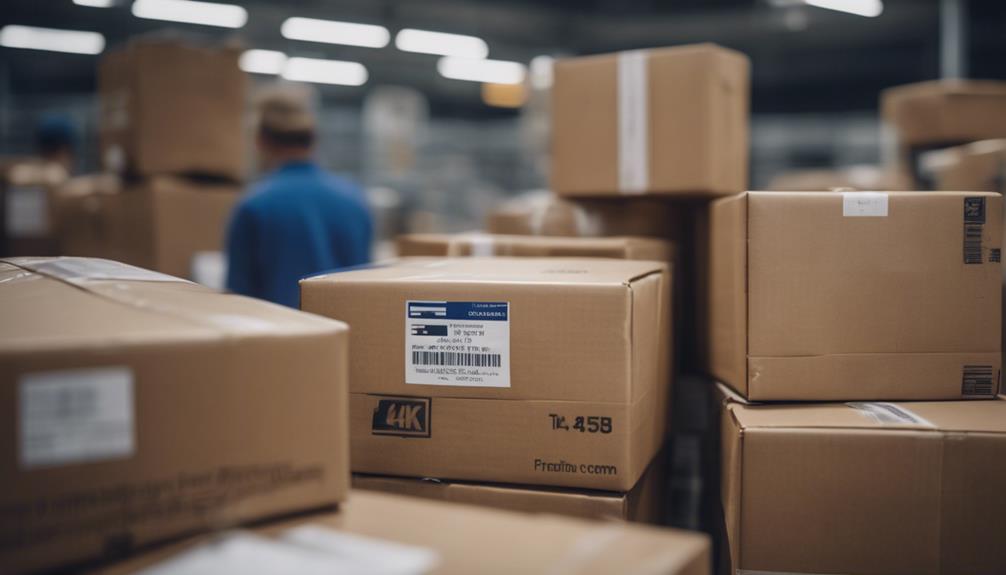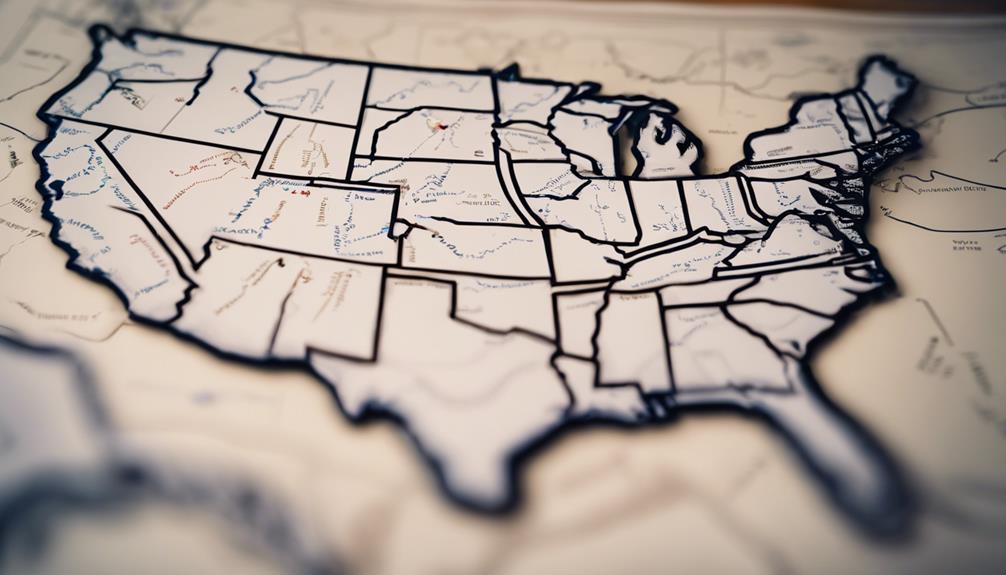Understanding USPS tracking statuses is crucial, especially 'In Transit.' This status signifies movement within the postal network as packages travel between sorting facilities en route to their destination. It reflects ongoing transportation via various modes such as trucks, planes, or trains. Monitoring this status aids in tracking the package's location and estimating its delivery. Additionally, it is essential for comprehending the dynamics of a package's journey. By grasping the meaning behind 'In Transit,' senders and recipients can accurately monitor their packages' progress. This insight is fundamental in ensuring the efficient delivery of items.
Key Takeaways
- 'In Transit' marks movement through USPS network.
- Packages shift between sorting facilities en route.
- Ongoing transportation via trucks, planes, or trains.
- Monitor location and estimated delivery timeline.
Tracking Statuses Overview

USPS tracking statuses offer vital visibility into package movement, enabling senders and recipients to monitor shipments accurately.
Through shipping innovations, such as barcode scanning and real-time updates, customers can track packages from origin to destination.
The 'In Transit to Next Facility' status, for instance, signifies that the package is actively moving between distribution centers or sorting facilities.
This information assures customers that their packages are en route and progressing towards delivery.
Understanding In Transit Status
The 'In Transit' status within USPS tracking provides essential information regarding the movement and progress of packages between various distribution points.
This status signifies that the package is actively moving through the USPS network, shifting between sorting facilities on its journey towards the final destination.
Understanding the in transit nuances is vital as it reflects the ongoing movement of the package through different transportation modes such as trucks, planes, or trains.
Monitoring this status helps to track the package's location and estimated delivery timeline accurately.
Common Transit Delays

Frequently encountered delays in package transit can stem from various factors, impacting the timely delivery of shipments through the USPS network.
One common issue is frequent misrouting, where packages are sent to incorrect facilities, causing delays in reaching their intended destinations.
Additionally, peak season delays are prevalent during busy periods such as holidays, leading to congestion within the postal system and temporary holds on packages. These delays can extend transit times considerably, affecting the overall delivery schedule.
Understanding these common transit delays can help manage expectations and provide insights into potential challenges faced by packages in transit.
Addressing Stuck Packages
Addressing delays in package transit, particularly when packages are stuck, requires proactive measures to guarantee timely resolution and successful delivery to recipients.
When encountering package concerns such as extended transit times or packages seemingly stuck in transit, it is vital to maintain tracking accuracy and stay informed. Customers should monitor tracking updates for any changes in status and contact USPS customer service if delays persist beyond the expected timeframe.
Ensuring the accuracy of the delivery address is essential to avoid unnecessary delays. While temporary stalls in transit are common, staying vigilant and proactive can help expedite the resolution of any package concerns, leading to a smoother delivery process.
Arrival Expectations

Arrival timelines for packages vary based on factors such as shipping class, destination, and current postal conditions.
When setting package expectations, consider the following:
Domestic Delivery:
- Priority Mail: 2-3 days for delivery.
International Shipping:
– Typically arrive within 3-6 weeks.
SmartPost Services:
– Delivery may take 10 or more days.
Understanding these arrival timeframes can help manage expectations regarding package delivery.
It's essential to account for possible delays due to weather, peak seasons, or processing issues to avoid unnecessary concerns about the status of your shipment.
Troubleshooting Delayed Packages
Understanding the common causes and steps to address delayed packages can help resolve shipping issues efficiently and effectively.
When facing delayed packages, it is essential to first track the package regularly for updates on its status.
Contacting customer service for assistance in resolving shipping issues is recommended if delays persist.
Reviewing shipping policies and estimated delivery times from the retailer can provide insight into expected arrival dates.
In cases of prolonged delays, consider filing a claim for lost or damaged packages.
If the tracking information shows availability, opting for package retrieval at the local post office can expedite delivery confirmation and address any potential delays effectively.
Useful Shipping Resources

Several resources are available to assist individuals in maneuvering the complexities of shipping processes and addressing common concerns efficiently.
When it comes to shipping tips and ensuring package safety, the following resources can be highly beneficial:
- Shipping guides for detailed insights into USPS tracking and shipping procedures.
- Customer reviews of different shipping services to gauge their reliability.
- Articles providing solutions to common shipping concerns and offering valuable tips.
These resources can aid individuals in understanding the shipping process better, optimizing their shipping strategies, and ensuring the safe and timely delivery of packages.
Privacy and Policy Insights
When delving into the domain of USPS tracking and shipping processes, one must carefully navigate the intricate landscape of privacy and policy insights to guarantee compliance and understanding.
Data protection is a critical aspect of USPS operations, ensuring that customer information remains secure and confidential.
User consent plays an essential role in how data is collected, stored, and utilized within the USPS tracking system.
By adhering to stringent privacy policies and regulations, USPS upholds the trust of its users and maintains the integrity of their personal information.
Regular updates to policies reflect the commitment to safeguarding user data and adapting to evolving standards in the field of data protection and privacy.
Conclusion
In summary, traversing the complexities of USPS tracking statuses, such as 'In Transit to Next Facility,' requires a keen understanding of the parcel's journey through the distribution network.
By unraveling the nuances of transit delays, addressing stuck packages, and setting arrival expectations, individuals can streamline the shipping process.
Remember, when it comes to tracking packages, knowledge is power, and taking proactive steps can guarantee a smoother delivery experience.

Oliver Postman was born and raised in a small town in the Midwest, where his fascination with postage began at an early age. At just six years old, he stumbled upon a box of old stamps in his grandfather’s attic, igniting a passion that would shape his life.
